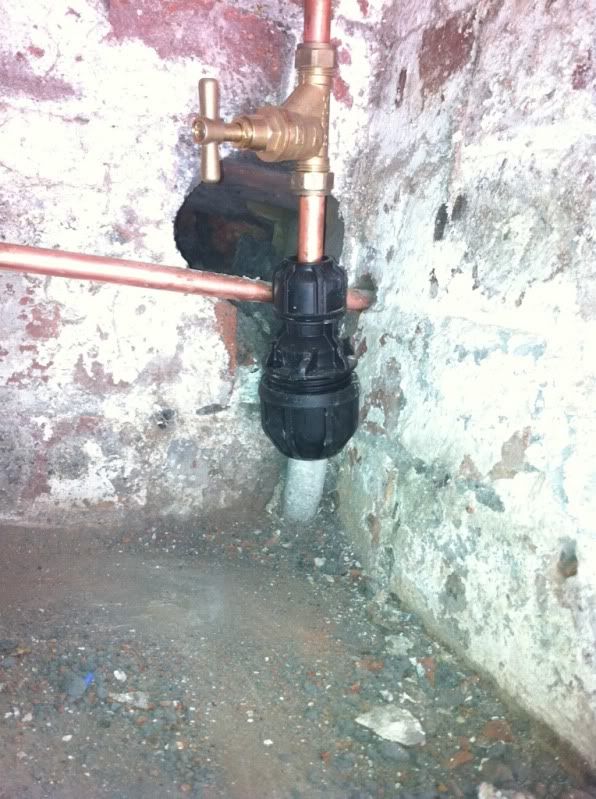As you can see this has been cut back and joined with an insulated connector before the stop tap.
How would you bond this installation?
This is a more extreme example of my water supply situation, the bonding of which we discussed at length a little while ago, and it raises all 'those questions' about the intent of an MPB [if you recall, I have a plastic interuption in the copper piping about 1 metre from the water meter].
I suspect we are all going to say that you need at least to bond to the lead pipe. If one takes the accepted view that the one and only purpose of primary bonding is to minimise any potential difference between the MET/CPCs and a potential (earth potential) introduced by an extraneous conductive part (the lead pipe), then that would presumably be all you'd need to do.
I also suspect that most people (like Holmslaw) would say that one should also extend the same bonding conductor (or possibly add a separate strap) to bridge across the plastic connector, and that is certainly what I would say. To my mind, that makes total sense, ensuring that pipework in the household is roughly at the same potential as the electrical installation's CPCs - but that connection to the copper pipework does not seem to qualify as 'main bonding' (and may well not be required by the regs), because that pipework is not extraneous and obviously cannot itself introduce any potential into the property (within which it is entirely contained).
If you were to suggest that you might only bond to the copper pipe, then you'd probably find yousrelf on the receiving ends of the same screams as when I toyed with idea of moving my main bonding about 500mm further from the water meter, so that it was on the 'house' side of the plastic interruption. If you did that, you would, admittedly have about two inches of 'unbonded' extraneous metal!!
One other point in passing. The design of some of those MDPE type plastic fittings (and associated collars/bushes etc.) is such that the copper pipe could possibly be going all the way through and touching the lead pipe. However, I don't think that alters any of the above, provided you bond at least to the lead pipe.
Kind Regards, John



